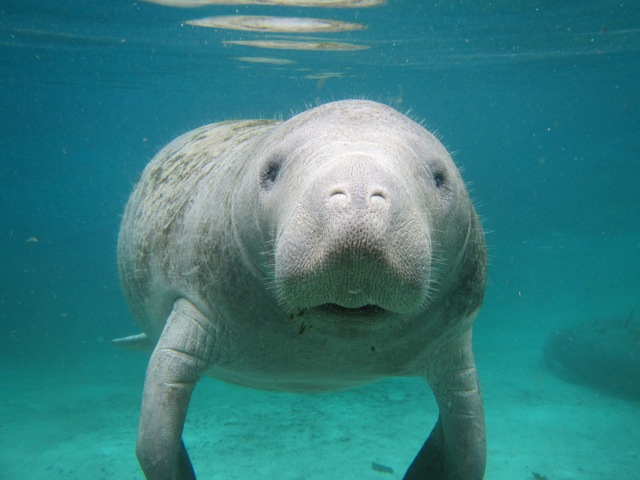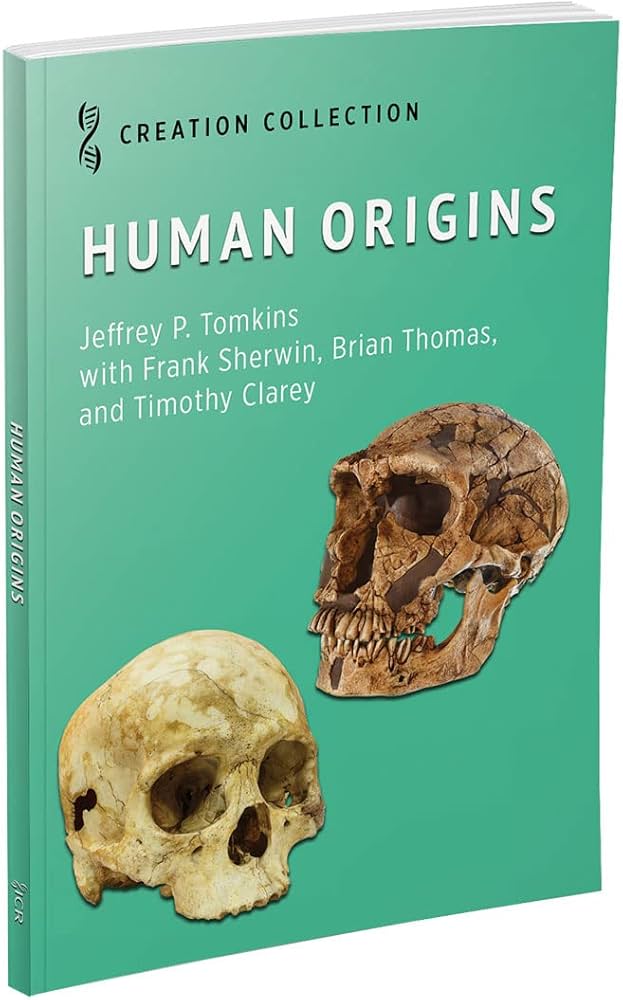Manatees (family Trichechidae, genus Trichechus), often called sea cows, are large, fully aquatic, mostly herbivorous marine mammals. Three living species exist, the Amazonian, West Indian, and the West African manatee. These are huge animals weighing from 400 to 550 kilograms (880 to 1,210 lb), and 2.8 to 3.0 metres (9.2 to 9.8 ft) long. The females tend to be both larger and heavier.
In many ways manatees are unique compared to all other life forms, a fact that poses major problems for evolutionists. It is almost like a designer selected their traits from a wide variety of existing life forms, from reptiles to fish to mammals. For example, manatees feed almost entirely on aquatic plants and that is “unique among living marine mammals” (Berta, 2012. Return to the Sea: The Life and Evolutionary Times of Marine Mammals. University of California Press. Berkeley p. 127).
They are also the only animal known to have a vascularized cornea (Ambati, et al., 2006. Nature 443: 993-997). Also like elephants, female manatees have two teats, one under each flipper (Shoshani (editor), 1992. Elephants: Majestic Creatures of the Wild. Rodale Press). Manatee have a total of 24 to 32 flat, rough-textured teeth and lack front teeth, but behind the lips on the roof of the mouth are dense, ridged pads that can tear through ingested plant material. Their diet of gritty vegetation abrades the teeth, particularly the enamel crown.
To solve this problem, the posterior molars erupt at the back of the jaw and slowly move forward like a conveyor belt to replace worn enamel crowns, which fall out of the front of the jaw. This process, called polyphyodonty, continues throughout their life and occurs only in two very different terrestrial animals, kangaroos (Penny, 2002. The Secret Life of Kangaroos. Raintree Steck-Vaughn) and elephants. This is one argument used to support the conclusion that manatees and elephants evolved from some hypothetical common ancestor (Shoshani, 1992; McDonald, 1984. The Encyclopedia of Mammals. Facts on File pp. 292-298).
Their small, widely spaced eyes are covered with eyelids that close in a circular manner like a microscope light diaphragm (McDonald, 1984). Its paddle-shaped tail is the clearest visible difference between manatees and other sea mammals, such as dugongs; whose tail is fluked similar to a whale tail. Manatees have six cervical vertebrae (Hautier, et al. 2010.PNAS 107 #44: 18903-18908), a trait found only in two and three-toed sloths. All other mammals possess seven cervical vertebrae (Frietson, 1999. J. of Experimental Zoology 285 #1: 19-26).
Manatees are herbivores that consume over 60 different freshwater plants. They use their large, flexible, prehensile upper lip to gather their food, as well as for social interactions and communication. The upper lip pad is split into left and right sides that can move independently.
They use their flippers to “walk” along the water floor while digging for plants and roots. When an appropriate plant is detected, they employ their flippers to scoop the vegetation toward their lips. Their lips then use seven muscles to manipulate and tear the plants into consumable sizes, and their front flippers then move the plants into the mouth. Adult manatee commonly consume up to 10 to 15 percent of their body weight daily. Consuming about 50 kg of food requires grazing for up to seven hours every day.
Like horses, they have a simple stomach, but a large cecum to digest tough plant matter. Their 45-meter long intestines are unusually long for mammals of their size. Digestion of their food causes manatees to produce enormous amounts of gas, which contributes to their barrel-shape.
Apart from mothers with their young, or males following a receptive female, manatees are generally solitary animals (McDonald, 1984), spending close to half of the day sleeping submerged, surfacing regularly for air at 20-minute intervals. The remainder of their time is spent grazing in shallow waters at depths of 1–2 metres (3.3–6.6 ft). Manatees inhabit the shallow, marshy coastal areas and rivers. They generally swim at about 5 to 8 kilometres per hour (3 to 5 mph), but can swim as fast as 30 kilometers per hour (20 mph). They typically breed once every other year; generally a single calf is born. After a 12-month gestation, a further 12 to 18 months is required to wean the calf (McDonald, 1984). Some species can live as long as 60 years.
Another trait unique among living aquatic mammals is their high density bones, particularly the ribs, which contain little or no marrow. These bones provide the animals with ballast or negative buoyancy to allow them to feed and to rest near the water bottom.
Manatees have good long-term memory and are capable of discrimination tasks and complex associative learning (Gerstein, 1984. Marine Mammals 1: 10-21), similar to dolphins (Carwardine, 2002. Whales, Dolphins and Porpoises. New York). They emit a wide range of sounds used to communicate with other cows and their calves. In addition to sight, sound, touch and taste, smell can also be used for communication.
During winter they seek warm, spring-fed rivers for warmth. Prolonged exposure to water temperatures below 68 °F (20 °C) causes stress and death. The main causes of their death are human-related, including habitat destruction. Their slow-moving, curious nature, coupled with dense coastal development, has led to many violent collisions with propeller-driven boats and ships, usually with large vessels that do not have protective skegs in front of the propellers (Flewelling, et al, 2005. Nature 435: 755-756).
Manatees hear a higher frequency than expected for a very large marine mammal. Unfortunately, large boats often emit very low frequencies, which confuse them. The low frequency propeller sounds are also not discernible near the surface where most accidents occur. Manatees usually swim away from boats with a higher frequency.
Manatees are aquatic mammals, all of which are assumed to have evolved from terrestrial mammals because the theories that propose their evolution from fish are even more problematic. To evolve from a terrestrial animal requires enormous anatomical and physiological changes, none of which has been documented in the fossil record, but only assumed.
Manatees and other Sirenians (including dugongs from the Red Sea to Taiwan and northern Australia) have a fossil record extending down to lower levels of Eocene rock (Berta, 2012, p. 128). Fossil remains of their assumed ancestors have been “dated” back to about 45 million years by evolutionists, about the same level as the manatees themselves. This putative long fossil record provides no hint of evolution from an alleged common ancestor (Domning, 1994. Proceedings of the 1st International Manatee and Dugong Research Conference, Gainesville, Florida 1-5). All Sirenia are thought to have evolved from some four-legged land mammals over 60 million years ago.
Their closest living relatives are assumed to be the Proboscidea (elephants) and Hyracoidea (hyraxes). Although the fossil record lacks evidence of their transformation into sea mammals, this major problem is explained by rationalizing that they “rapidly evolved into fully aquatic animals,” (Berta, 2012, p. 129), so rapidly that no fossil record remained! Of course, lack of evidence is not evidence.
So much speculation about their evolution exists that is unconstrained by fossil evidence that the leading manatee researcher, Dr. Daryl Domning, admitted he could only construct a “speculative” evolutionary history of the manatees (1982. J. of Paleontology 56 #3: 599-619). But speculation does not make good science. Obviously there is no good evidence that manatees ever evolved.
Jerry Bergman
February 2015
Subscribe to Dialogue







